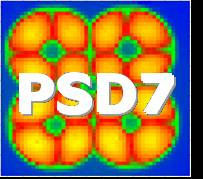Speaker
Prof.
Robert Lewis
(Monash University, Australia)
Description
The SmartPET collaboration is investigating the e_cacy of using two
planar High-Purity Germanium (HPGe) double-sided strip detectors as
a Compton imaging Positron Emission Tomography (PET) system. Monte
Carlo simulations suggest that a large proportion of interactions
within the detectors will occur within a small spatial and temporal
window, introducing signi_cant ambiguities within the position and
energy measurements made by the detectors. The a_ect of this
ambiguity on the quality/quantity of information used for image
reconstruction is the subject of this study.
Each detector in the system is to act as a single layer Compton
camera, thus the interaction sequences of annihilation -rays need to
be tracked within a detector volume, and the location and energy
deposit of each interaction determined. The resulting information
can then be used, depending on the interaction sequence combination,
to backproject either a cone of response (as in standard Compton
imaging) or a line of response (as in standard PET) into the image
space.
Each detector has an active area of 60mm x 60mm x 20mm and a strip
pitch of 5mm. Position resolution in the plane of the detector will
be achieved by analysis of the signals from strips neighbouring the
primary charge collector, and is expected to be around 1mm when a
single interaction occurs within the volume between two orthogonal
strips (intersection volume). Depth resolution will be obtained by
measuring the timing separation between the front and rear signals.
When multiple interactions occur within one intersection volume the
position resolution will be degraded. The resulting signal is likely
to be misinterpreted as a single interaction, or, the presence of
multiple interactions may be correctly identifed but the position and
energy information of each interaction will be irretrievable or
subject to a large uncertainty. Preliminary analysis of simulated
signals indicate that the detected position will be (approximately)
the average of the true interaction positions, and the detected
energy the sum of the true interaction energies.
This study will present the probability of multiple interactions
occurring within an intersection volume, the probability that those
interactions will be indistinguishable from a single interaction,
and the a_ect the incorrect measurements have on the accuracy of
backprojected lines/cones.
Primary author
Mr
Toby Beveridge
(Monash University, Australia)
Co-author
Prof.
Robert Lewis
(Monash University, Australia)
